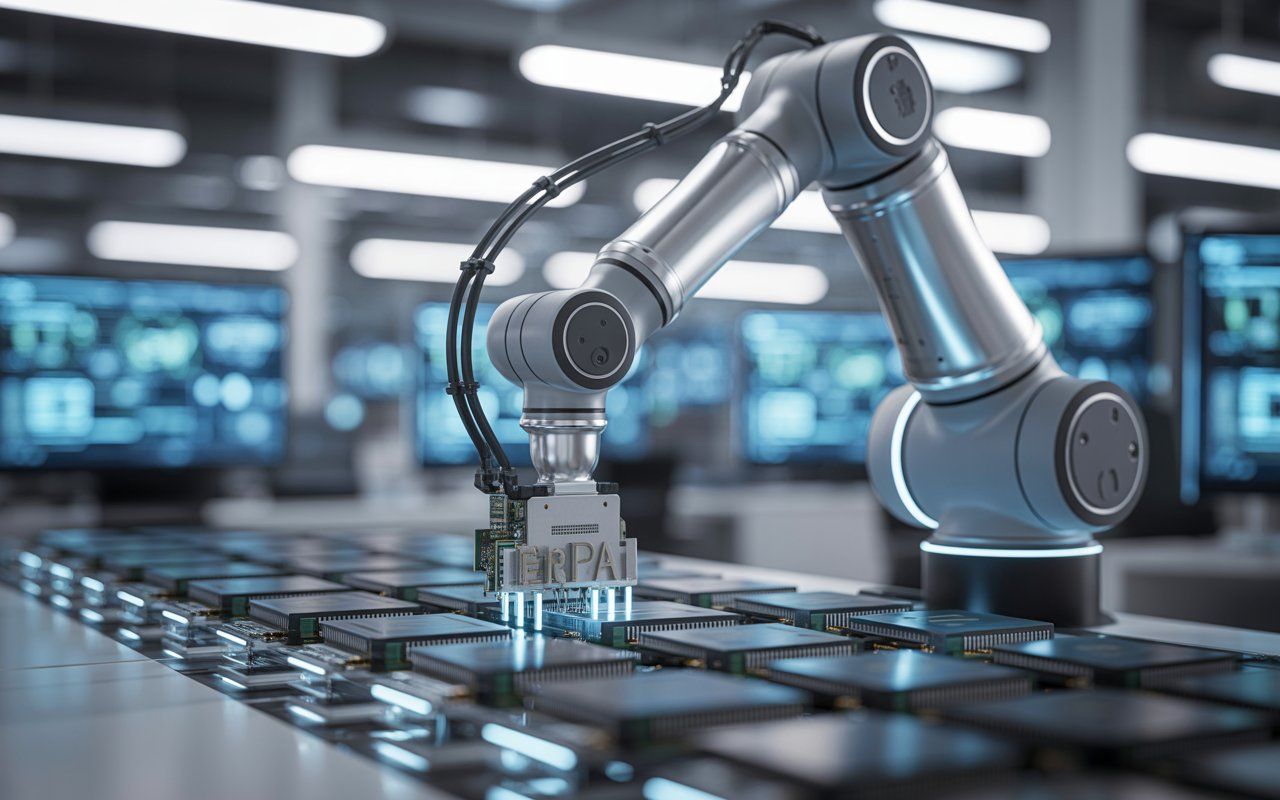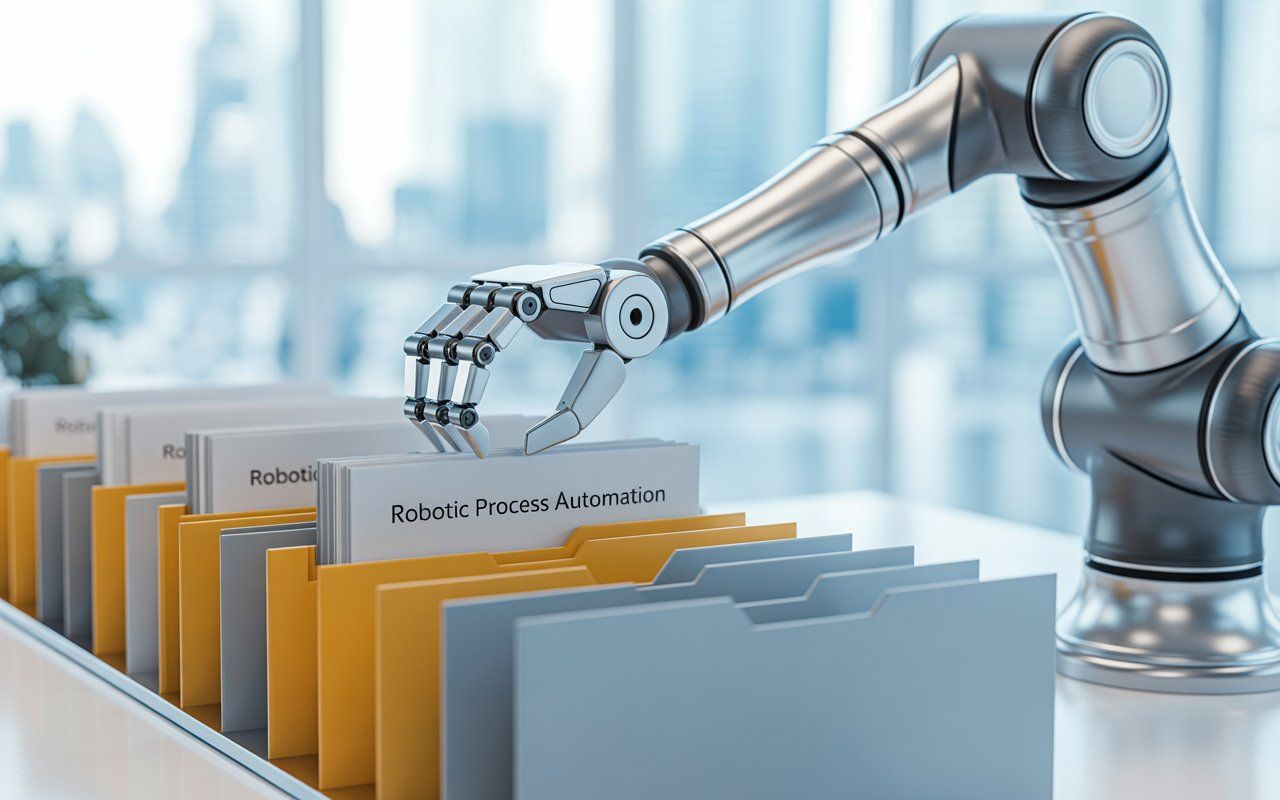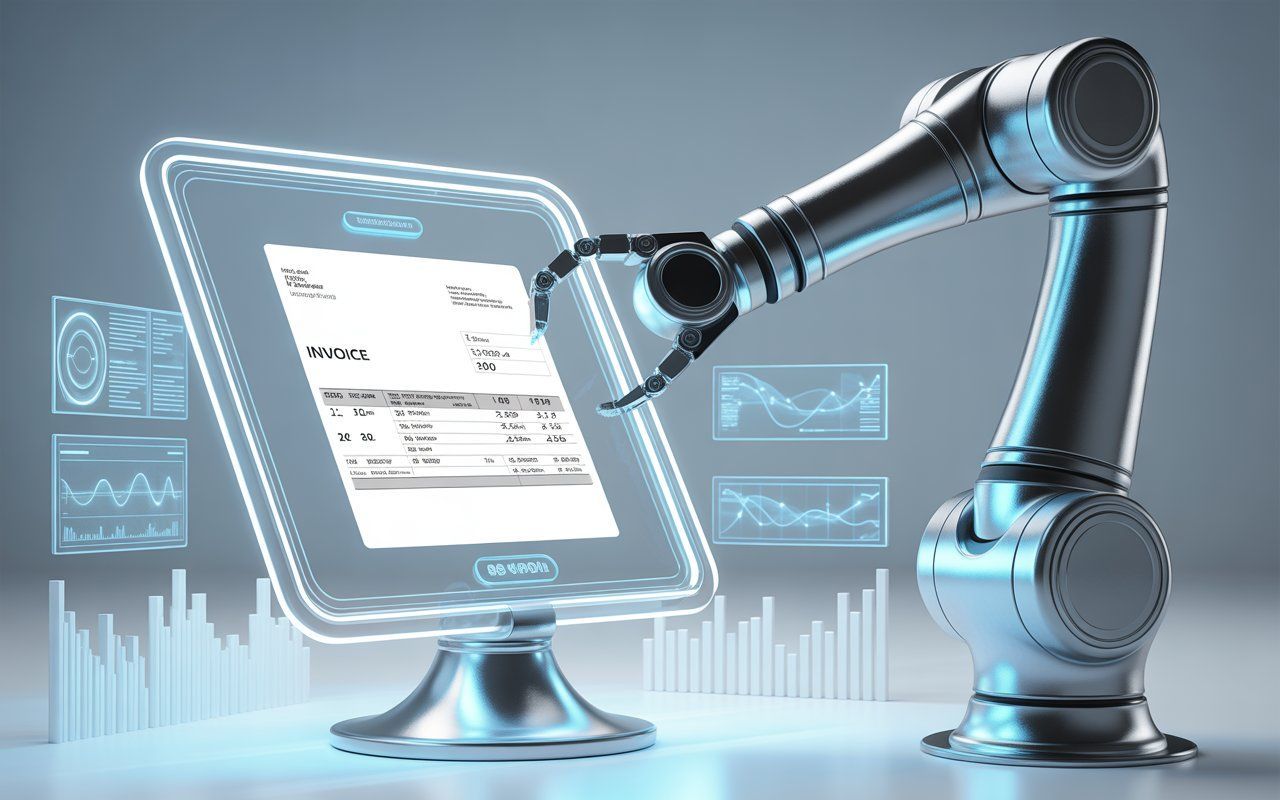What You Need to Know About RPA in Business Today
Key Highlights
Here are the key takeaways about robotic process automation (RPA) in business:
- RPA uses software robots to automate repetitive, rule-based digital tasks.
- This automation technology helps businesses increase efficiency, reduce human error, and achieve significant cost savings.
- RPA tools can be applied to various functions, including data entry, invoice processing, and customer service.
- Successful process automation frees up employees to focus on more strategic, creative, and meaningful work.
- RPA is used across many industries, from financial services and healthcare to manufacturing and retail.
Introduction
Have you ever wondered if there's a better way to handle tedious, repetitive tasks? Many businesses are turning to robotic process automation (RPA) as a form of automation to streamline their operations. This powerful automation technology is changing how work gets done by using software to handle manual processes. By embracing business process automation, you can unlock new levels of productivity and allow your team to concentrate on what truly matters. Let's explore what RPA is and how it can benefit your organization.
Understanding RPA: A Beginner's Guide to Automation
Understanding RPA: The Basics

At its core, robotic process automation is a straightforward concept. It involves using special RPA software powered by generative AI to create "bots" that can perform digital tasks just like a person would. Think of these RPA bots as a digital workforce that can handle the monotonous parts of your day.
This RPA technology is not about physical robots; it's about software that automates processes on a computer. Understanding the fundamentals of agentic automation process automation is the first step toward transforming your business operations. Below, we'll explain what it is and how it functions in a modern workplace.
What Is Robotic Process Automation?
So, what exactly is robotic process automation? It is a type of software technology that makes it easy to build, deploy, and manage software robots that mimic human actions interacting with digital systems and software. These bots can do things like understand what’s on a screen, complete the right keystrokes, navigate systems, and extract data.
The primary role of RPA is to take over repetitive, rule-based tasks that are often time-consuming for human employees. This form of business process automation allows organizations to streamline workflows, from simple data entry to more complex financial reconciliations, without needing to change existing IT infrastructure.
Essentially, RPA acts as a virtual assistant that follows a set of pre-defined rules to complete a process. By automating these tasks, you can ensure they are performed quickly and without error, freeing up your team for more valuable activities.
How RPA Works in Modern Organizations
RPA works by deploying software robots, or "bots," to interact with applications and systems in the same way a person does. These bots can log into applications, move files and folders, copy and paste data, fill in forms, and extract structured and semi-structured data from documents. It’s all about mimicking human actions on a computer.
This automation technology is designed to follow a series of steps to complete a task. For example, a bot could be programmed to open an email, extract an invoice attachment, read the data from it, and then enter that information into your accounting system. The entire process automation happens without any human intervention.
Ultimately, these software robots serve as a digital workforce that can operate 24/7. By taking over high-volume, repetitive tasks, they allow your human employees to shift their focus to problem-solving, customer interaction, and strategic thinking, adding more value to the business.
Key Features of RPA Technology

Modern RPA technology offers a suite of powerful features that make it a versatile tool for businesses. A key component is an intuitive automation platform that allows users to design and manage bots, often with low-code or no-code software tools. This accessibility helps democratize automation across an organization.
This automation technology is increasingly combined with artificial intelligence for intelligent automation, enabling it to handle more complex scenarios. Let's look at the core capabilities of these software robots and how they differ from more traditional automation methods.
Software Robots and Their Core Capabilities
Software robots are the workhorses of RPA. These bots are programmed to execute a wide variety of tasks that are typically rule-based and repetitive. Unlike humans, they can perform these tasks around the clock with perfect accuracy, which significantly reduces the chance of costly errors.
This automation technology is not limited to simple actions. With the integration of capabilities like natural language processing and computer vision, bots can interpret text, understand documents, and even respond to customer inquiries. This allows them to handle more complex tasks that once required human judgment.
Some core capabilities of software robots include:
- Data Management: Performing data entry, moving files, and managing folders.
- System Interaction: Logging into applications and interacting with various systems.
- Information Extraction: Capturing and extracting data from documents and forms.
- Process Execution: Following step-by-step instructions to complete a workflow.
Differences Between RPA and Traditional Automation Tools
It is important to understand that RPA is different from traditional automation. Traditional automation tools often require deep integration with backend systems, which usually involves significant IT development and infrastructure changes. These projects can be complex and time-consuming.
In contrast, RPA tools work at the user interface (UI) level, just like a human would. This means software robots can interact with applications without needing to alter the underlying code or systems. This approach makes RPA faster and more flexible to implement, allowing businesses to see a return on investment much more quickly.
This automation technology is designed for business users to build and manage automations, while traditional solutions are typically developer-centric. Tools like process mining can also complement RPA by identifying the best processes to automate first.

Major Benefits of RPA for Businesses
The benefits of RPA are compelling and can impact nearly every aspect of your organization. From significant cost savings to improved operational speed, business process automation helps you achieve more with less. It's a key driver in many digital transformation efforts.
By automating mundane tasks, you not only boost efficiency but also enhance the customer experience by enabling faster and more accurate service. Let’s explore some of the major advantages RPA can bring to your business, such as improved productivity and accuracy.
Boosting Efficiency and Productivity

One of the most significant benefits of RPA is the immediate boost in efficiency and productivity. Software robots can complete tasks much faster than humans, cutting down processing times from hours to minutes. Imagine your team being able to offload routine tasks and focus on more strategic initiatives.
These bots can work 24/7 without breaks, ensuring that your business processes are always moving forward. Whether it's processing orders or generating reports, RPA handles these repetitive tasks consistently, allowing your operations to run smoothly even outside of standard working hours.
This increased productivity doesn't just apply to individual tasks; it has a ripple effect across the entire business process. By automating key steps, you can accelerate entire workflows, leading to faster service delivery and a more agile organization ready to meet market demands.
Enhancing Accuracy in Repetitive Processes
Human error is a natural part of any manual process, especially when a person is performing monotonous tasks like data entry for long periods. These small mistakes can lead to significant costs and time spent on rework. RPA helps eliminate this problem entirely.
Software bots are programmed to follow rules with perfect precision. As long as the instructions are correct, they will execute the business process the same way every time. This consistency guarantees a high level of accuracy and produces predictable, uniform results you can count on.
This level of accuracy is crucial for compliance and quality control. With process automation, you can establish standardized workflows that adhere to regulations and internal policies, complete with audit trails for full transparency. This not only reduces risk but also builds trust in your operational data.
Common Business Tasks Automated by RPA
So, what kind of work can you actually automate with RPA? The technology excels at handling a wide range of high-volume, rule-based business processes. If a task is repetitive and involves digital systems, it's likely a great candidate for task automation.
From simple data entry to more complex customer service functions, RPA can take over manual tasks, freeing up your team's time. Let's look at some specific examples of how RPA is used to simplify routine tasks in finance and customer support.
Simplifying Data Entry and Invoice Processing

Data entry and invoice processing are two of the most common business functions to be transformed by RPA. These tasks are notoriously repetitive and prone to error when performed manually. This automation technology can handle them quickly and accurately.
An RPA bot can be configured to automatically open emails, download invoice attachments, extract key information like invoice numbers and amounts, and enter that data directly into your accounting software. This streamlines the entire accounts payable process, reducing delays and improving cash flow management.
Here are a few examples of how RPA simplifies these tasks:
- Extracting data from purchase orders and invoices.
- Validating information against existing records in your ERP system.
- Routing invoices for approval based on predefined rules.
- Generating standardized financial reports automatically.
Automating Customer Service Workflows
In customer service, speed and accuracy are everything. RPA can significantly enhance the customer experience by automating background tasks, allowing your agents to focus on providing personalized support. This automation technology empowers your team to resolve issues faster.
For instance, when a customer contacts support, an RPA bot can instantly pull up their complete history from multiple systems and present it to the agent in a single view. This eliminates the need for agents to toggle between different applications, saving valuable time on every call.
Automating the customer service business process with RPA can involve:
- Routing support tickets to the appropriate department automatically.
- Updating customer information across different systems in real time.
- Answering common customer queries with chatbots available 24/7.
- Processing service requests like address changes or account updates.
Popular Use Cases Across Industries
RPA is not a one-size-fits-all solution; its use cases are incredibly diverse and span numerous industries. Organizations in specific industries are leveraging automation to solve their unique challenges, from streamlining compliance in financial services to managing patient data in healthcare.
The flexibility of RPA allows it to be adapted to nearly any rule-based process, making it a valuable tool for digital transformation across the board. Below, we'll explore some industry-specific applications in finance, banking, healthcare, and insurance to give you a better idea of its impact.
RPA in Finance and Banking
The financial services and banking sectors were early adopters of RPA, and for good reason. These industries are heavily regulated and deal with massive volumes of transactions, making them ideal candidates for process automation. RPA helps them improve accuracy, ensure compliance, and achieve significant cost savings.
Common use cases include automating account reconciliation, where bots compare records across different systems to identify discrepancies. They are also used for generating compliance reports, processing loan applications, and managing accounts payable and receivable, all of which reduce manual effort.
By automating these processes, banks and financial institutions can not only reduce operational costs but also speed up service delivery. This allows them to offer faster loan approvals and quicker responses to customer inquiries, giving them a competitive edge in a demanding market.
RPA Applications in Healthcare and Insurance
In healthcare and insurance, managing large amounts of sensitive data accurately and efficiently is critical. RPA provides a secure way to handle this information while streamlining administrative tasks. This automation technology helps reduce the burden on staff and improve patient and policyholder experiences.
For healthcare providers, RPA can automate patient scheduling, claims processing, and managing patient records. In the insurance industry, bots are used for policy administration, underwriting support, and handling claims. In both fields, process automation ensures data is handled consistently and securely.
By automating these back-end processes, healthcare and insurance organizations can free up their staff to focus on more patient-centric or client-facing activities. This leads to better care, faster claims resolution, and improved operational efficiency, which are crucial in these highly competitive sectors.
Challenges and Limitations of RPA Adoption
While RPA offers many benefits, it's also important to be aware of the potential challenges and limitations. A successful RPA adoption journey requires careful planning and preparation to avoid common pitfalls. Issues can range from technical hurdles like integration issues to organizational challenges such as resistance to change.
Understanding these obstacles is the first step to overcoming them. Proper change management and addressing technical concerns head-on will pave the way for a smooth implementation. Let’s look at some of the technical and people-related challenges you might face.
Technical Obstacles and Integration Issues
One of the main technical obstacles in RPA implementation is dealing with existing IT infrastructure. While RPA is designed to work with most systems, integrating it with older legacy systems can sometimes be tricky. These systems may lack modern APIs, making it harder for bots to interact with them seamlessly.
Another challenge is ensuring that your RPA solution can scale across various enterprise systems. As your automation program grows, managing hundreds or thousands of bots requires a robust governance framework and centralized management to maintain control and security.
To avoid these integration issues, it's crucial to involve your IT department from the very beginning. They can help assess the compatibility of your current systems, plan for scalability, and ensure the automation initiative aligns with the company's overall technology strategy.
Change Management and Employee Training
A successful digital transformation is not just about technology; it's about people. One of the biggest hurdles in RPA adoption can be employee resistance. The human workforce may fear that automation will replace their jobs, leading to a lack of buy-in for the initiative.
Effective change management is key to overcoming this challenge. It’s essential to communicate clearly about the goals of RPA—explaining that it’s meant to augment human capabilities, not replace them. Highlighting how automation will free employees from tedious tasks to focus on more engaging work can help win them over.
Investing in employee training is also critical. Your team will need to learn how to work alongside their new digital colleagues. Following
best practices for training and upskilling ensures that your human workforce feels valued and empowered to contribute to the company's evolving digital landscape.
Conclusion
In summary, Robotic Process Automation (RPA) has become an essential tool for businesses seeking to enhance productivity and streamline operations. By automating mundane tasks, organizations can free up valuable time for their employees to focus on more strategic initiatives. However, it’s important to approach RPA with a clear understanding of both its benefits and potential challenges, including technical integration and change management. By addressing these factors, companies can position themselves to leverage RPA effectively and gain a competitive edge in their respective industries. If you’re looking to explore how RPA can specifically benefit your organization, don’t hesitate to get in touch for a free consultation!
Frequently Asked Questions
Which RPA solutions are most widely used today?
Many RPA solutions are available, and the best choice depends on your specific business needs. Enterprise-level RPA platforms like SS&C Blue Prism provide a comprehensive suite of tools for building, managing, and scaling software robots. This automation technology is designed to support you from simple task automation to complex, end-to-end workflows.
What skills do you need for a successful RPA career?
A successful RPA career often requires a mix of technical and business skills. Familiarity with RPA tools is essential, while knowledge of process automation best practices helps in identifying and designing effective workflows. As RPA integrates more with AI, skills in areas like machine learning are also becoming increasingly valuable.
How do companies measure the ROI of RPA implementation?
Companies measure the ROI of business process automation in several ways. The most direct metrics include cost savings from reduced manual labor and increased processing speed. Other factors include improved accuracy, enhanced compliance, and the value of employee time freed up for higher-value activities. Tools for process discovery can help identify high-ROI opportunities.
To Learn more and Schedule a Meeting:



